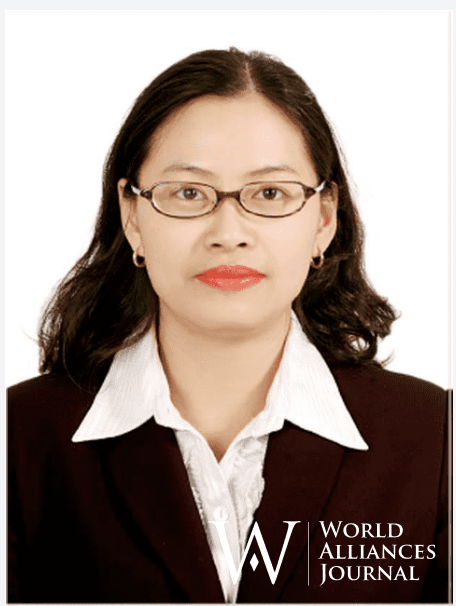
Dr. Dinh Thi Hoang Yen, Head of Trade Office of Viet Nam Embassy in Austria and Slovenia. (Photo: Provided by the subject)
Strategic Priorities in Technological Cooperation
WAJ: Austria is renowned for its strength in high-tech industries such as automation, smart cities, renewable energy, and semiconductors. Could you share which specific sectors Vietnam is prioritizing in its cooperation with Austria, especially regarding technology transfer and the development of high-value-added industries?
Dr. Dinh Thi Hoang Yen, Head of Trade Office of Viet Nam Embassy in Austria and Slovenia: Technological cooperation between Vietnam and Austria has been progressing very positively. On May 16, 2025, the Embassy of Vietnam in Austria, in collaboration with the Austrian Federal Economic Chamber (WKO), successfully organized The First Vietnam–Austrian High-Tech and Innovation Forum. The event attracted leading Austrian and Vietnamese institutions and technology companies such as the Austrian Institute of Technology (AIT), AVL, EVG, Infineon, Platform Industrie 4.0, Silicon Austria Labs (SAL), Spin Tech, the National Innovation Center (NIC) under Vietnam’s Ministry of Planning and Investment, VNPT Group, FPT, Sovico, NTQ, and Genetica...
Our cooperation focuses on sectors where both sides share strengths. For example, in the automotive sector, Vietnam’s Vingroup has collaborated with Austria’s AVL List GmbH and Magna Steyr GmbH & Co KG to produce gasoline and electric vehicles. AVL, with over 77 years of experience, has worked with Vietnam for more than 25 years in research, training, and technology transfer with universities such as Hanoi University of Science and Technology, Vietnam Maritime University, the University of Danang, and Ho Chi Minh City University of Technology. This collaboration helped Vingroup launch Vietnam’s first domestically designed car, VinFast.
In clean energy, Andritz Group—a global leader in hydroelectric equipment with 185 years of experience and more than 20% global market share in turbine installations—has been present in Vietnam for over 15 years. Its local subsidiary, established in 2016, has supplied more than 110 pieces of equipment with a total installed capacity of nearly 3,000 MW, contributing to major projects like Nhan Hac, Upper Kon Tum, Pac Ma, the Ialy Hydropower expansion, and upgrades to Hoa Binh and Thac Ba plants.
On March 26, 2025, an MoU was signed between Vietnam’s Department of ICT Industry, the Posts and Telecommunications Institute of Technology (PTIT), and Austria’s EVG Group in the presence of top Vietnamese legislators and science officials. EVG is a world leader in wafer processing and 3D chip bonding technologies. This MoU represents a key milestone in Vietnam’s pursuit of a domestic semiconductor industry and a deepening of bilateral high-tech cooperation.

Deputy Prime Minister Nguyen Chi Dung delivers a virtual speech at the High-Tech and Innovation Forum in Austria on May 16, 2025. (Photo: Organizing Committee)
Export Potential and Competitive Advantages of Vietnamese Enterprises
WAJ: In the context of Vietnam’s rapid digital transformation, how do you assess the export potential of Vietnam’s tech products and digital services to Austria and the broader EU? What factors could help Vietnamese businesses build competitive advantages in this sector?
Dr. Dinh Thi Hoang Yen: Vietnam is making significant progress in exporting software development services. FPT, for example, has established a branch in Slovakia with 500 staff and is now looking to work with Austrian firms to provide end-to-end digital solutions—from product engineering and cloud migration to data analytics, IoT, and AI.
These advantages stem from:
European-standard technical quality delivered at competitive prices via global delivery models.
A strong focus on Research and Development (R&D), partnerships with major tech firms, and adoption of cutting-edge innovations like digital twins, AI-assisted automation, and green technologies.
Tailored solutions for specific industries with rapid and flexible deployment.
Vietnamese firms, particularly in the digital economy, are uniquely positioned to serve European clients seeking agile, cost-efficient innovation partners.
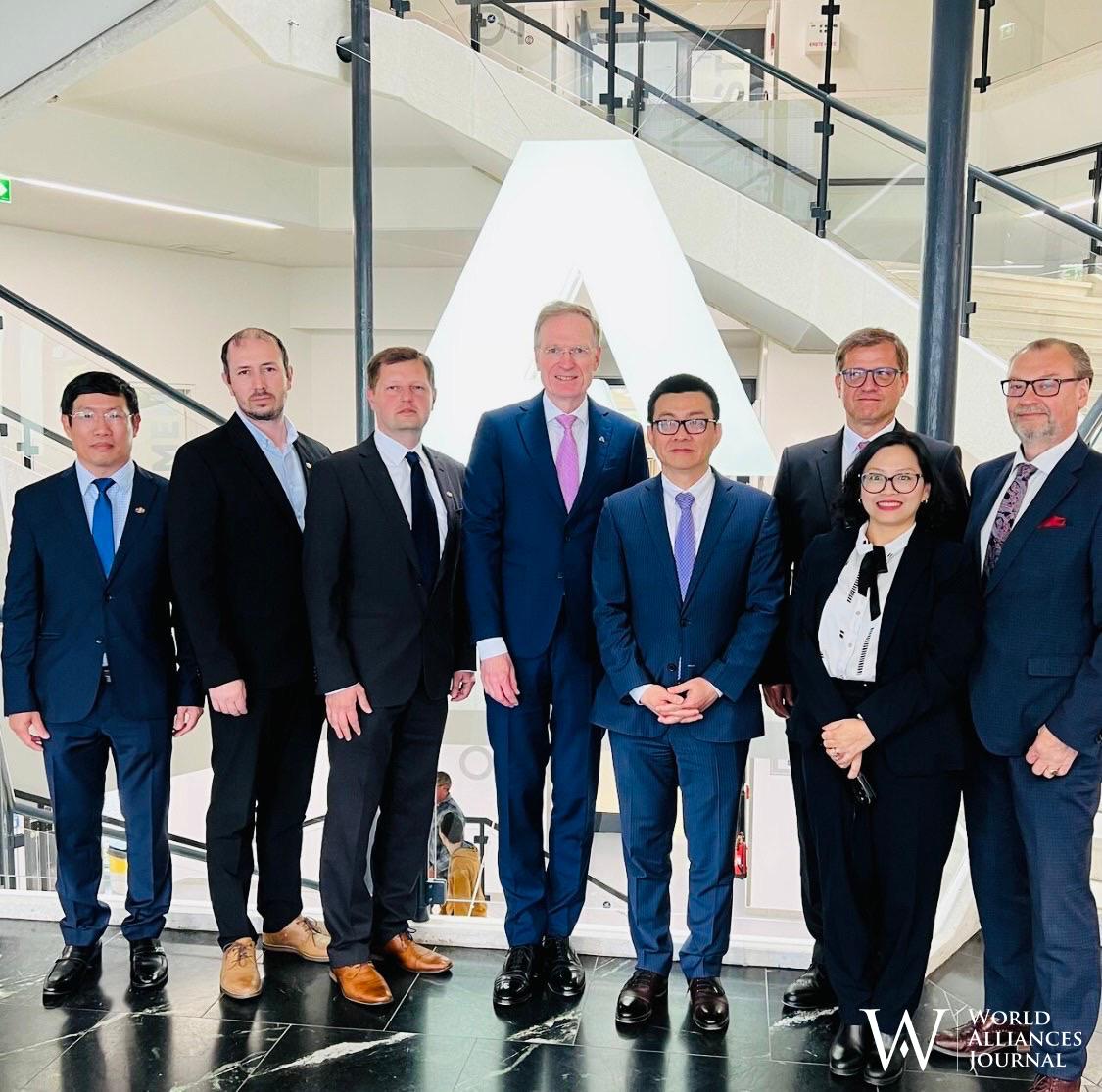
The Vietnamese Embassy in Austria meets with Andritz Group in Graz. (Photo: Provided by the subject)
Tangible Outcomes Expected from the Forum
WAJ: One of the forum’s key goals was to promote substantive cooperation. Were there any MoUs, incubation programs, or bilateral innovation initiatives signed or launched during the event?
Dr. Dinh Thi Hoang Yen: A highlight of the Forum was the signing of a Memorandum of Understanding (MoU) between VNPT Group and the International Institute for Applied Systems Analysis (IIASA), based in Austria.
VNPT is one of Vietnam’s top digital infrastructure providers and is investing $100 million from 2025 to 2030 in AI development, including a Vietnamese-language LLM with over 100 billion parameters. It aims to serve Vietnam’s digital government, digital economy, and digital society goals. VNPT’s cybersecurity division, with hundreds of specialists, also plays a key role in safeguarding infrastructure and data.
The partnership with IIASA leverages their shared vision of applying AI to tackle complex economic and societal challenges, combining research excellence with real-world application.

Signing ceremony of the cooperation agreement between IIASA and VNPT at the Forum. (Photo: Provided by the subject)
Institutional Linkages Between Innovation Centers
WAJ: Vietnam is actively promoting innovation through centers like the National Innovation Center (NIC). Are there plans to establish direct linkages with Austrian R&D institutions or tech firms for joint R&D initiatives?
Dr. Dinh Thi Hoang Yen: Mr. Nguyen Xuan Hoai, Deputy Director of NIC, joined the Forum to highlight NIC’s mission: to foster a national innovation ecosystem, accelerate technology transfer, and support startup development under favorable institutional frameworks.
Austria’s advanced R&D capabilities make it an ideal partner for Vietnam’s strategic sectors such as AI, quantum computing, semiconductors, electronics, and clean energy. NIC hopes to work with Austrian institutions like the Austrian Institute of Technology (AIT) and the Austrian Research Promotion Agency (FFG) to promote joint research in sustainable technologies, biotech, smart agriculture, and digital economy solutions.
Policy Hurdles and Economic Diplomacy Outlook
WAJ: What are the current obstacles to expanding Vietnam-Austria high-tech trade? What policies or initiatives could help remove those barriers and deepen cooperation?
Dr. Dinh Thi Hoang Yen: Deputy Prime Minister Nguyen Chi Dung has outlined four strategic areas: expanding R&D and workforce training; supporting SMEs in digitalization; advancing green energy projects like hydrogen; and leveraging NIC to scale up public-private partnerships.
Dr. Vu Xuan Hoai emphasized that Vietnam views international cooperation as essential to institutional reform, talent development, and digital infrastructure. Efforts focus on AI and semiconductors, but challenges remain in bridging skill gaps, securing startup financing, and aligning with global standards.
Digital transformation requires more than adopting new technologies. It demands deep shifts in business models and policy frameworks. Vietnam must also strengthen cybersecurity as part of its digital ecosystem. Legal harmonization and mutual recognition of standards will be key to future cooperation.
To that end, the Vietnamese Embassy in Austria has created a dedicated platform to facilitate dialogue between governments, businesses, and research institutions. Vietnam and Austria—as respective gateways to ASEAN and the EU—can build on over 50 years of diplomatic ties to co-create value in the global innovation value chain.
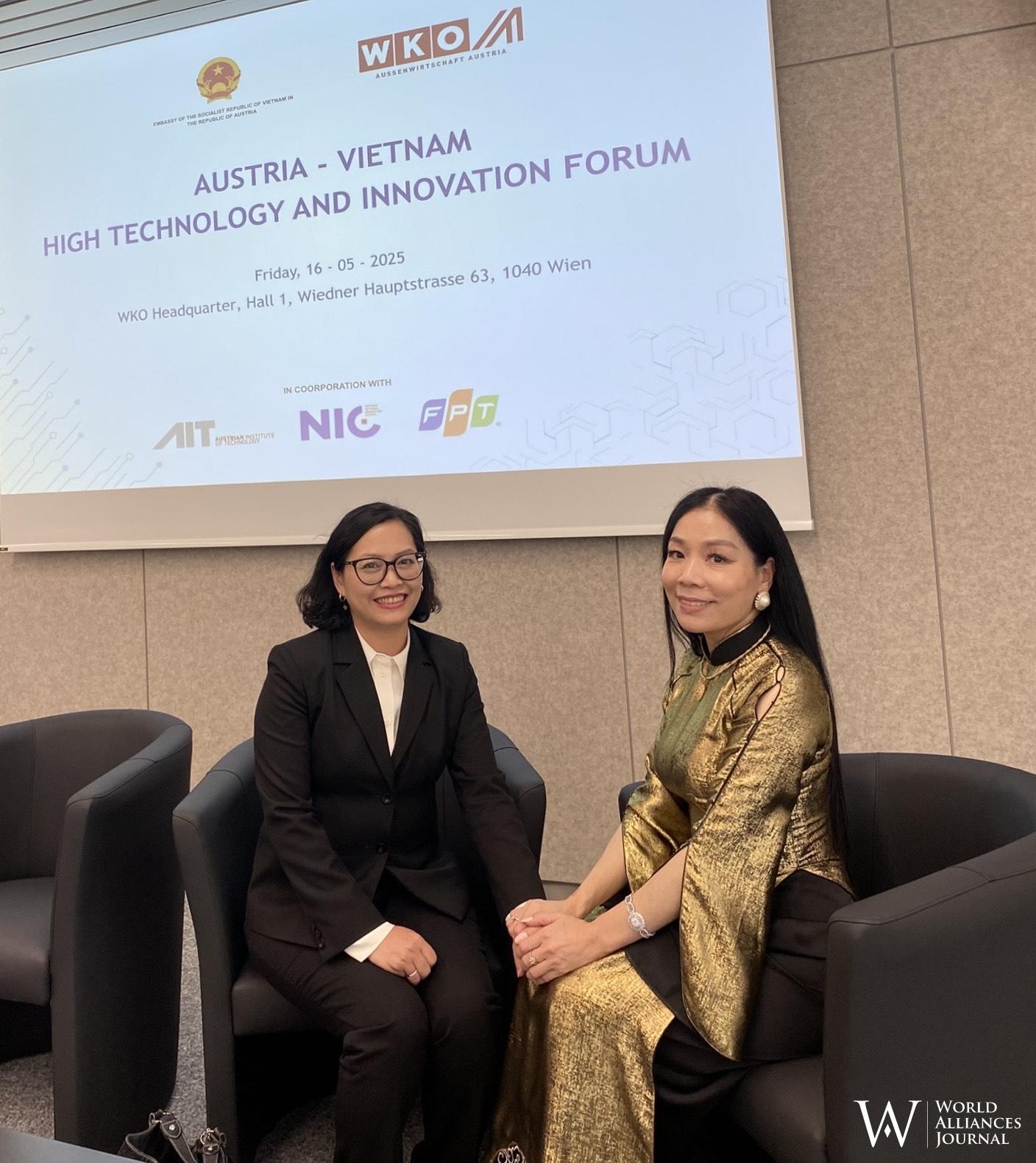
Dr. Dinh Thi Hoang Yen is interviewed by journalists at the First Vietnam–Austrian High-Tech and Innovation Forum, held in May 2025 in Vienna. (Photo: WAJ)
Conclusion
As the race for innovation accelerates globally, Vietnam and Austria are not just trading goods or ideas—they are shaping a shared technological vision. In aligning their strengths in R&D, education, and institutional support, both countries are forging not only a high-tech future, but a sustainable and strategic partnership for decades to come.
WAJ: Sincerely thank you, Doctor!
Vienna, 5/2025
PROMOTED

The United Nations Scientific Committee on the Effects of Atomic Radiation (UNSCEAR) has concluded its 69th session, elected a new Bureau, endorsed a new strategy for data collection, analysis and dissemination and called for Member States to participate in the evaluation of public exposure to ionizing radiation.
WAJ- Young translator conquers the ancient Greek classic Anabasis – Memoir of the Persian Expedition
- Austria news - Usama Nosshy channel covers Asean's 55th anniversary celebrations at the United Nations in Vienna
- VietnamPlus Newspaper reported about ASEAN's 55th anniversary at the United Nations in Vienna
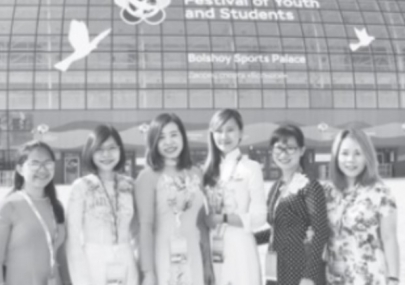
Interdisciplinary Culture
If you want to show light, fire it
By The Mosaics of the KingMOST VIEWED
Writer To Hoai is famous for his book De Men Adventure Ky (1941) written for children. Currently, "Crickets" have traveled all over the world. The story has been translated into many languages and published in many countries around the world. He is likened to the Andersen of Vietnam.
WAJAt first glance, she doesn't stand out when standing next to her Asian girls, I become more and more in the middle European women. Yet, people like look at you, especially like to peek, every time you say, or every time she laughs. Asian-style face Dong, round black eyes that can talk, the corner of his mouth when also fresh. Long, silky black hair, clear voice, Standard and flexible pronunciation even when I speak the language German and Vietnamese.
WAJ

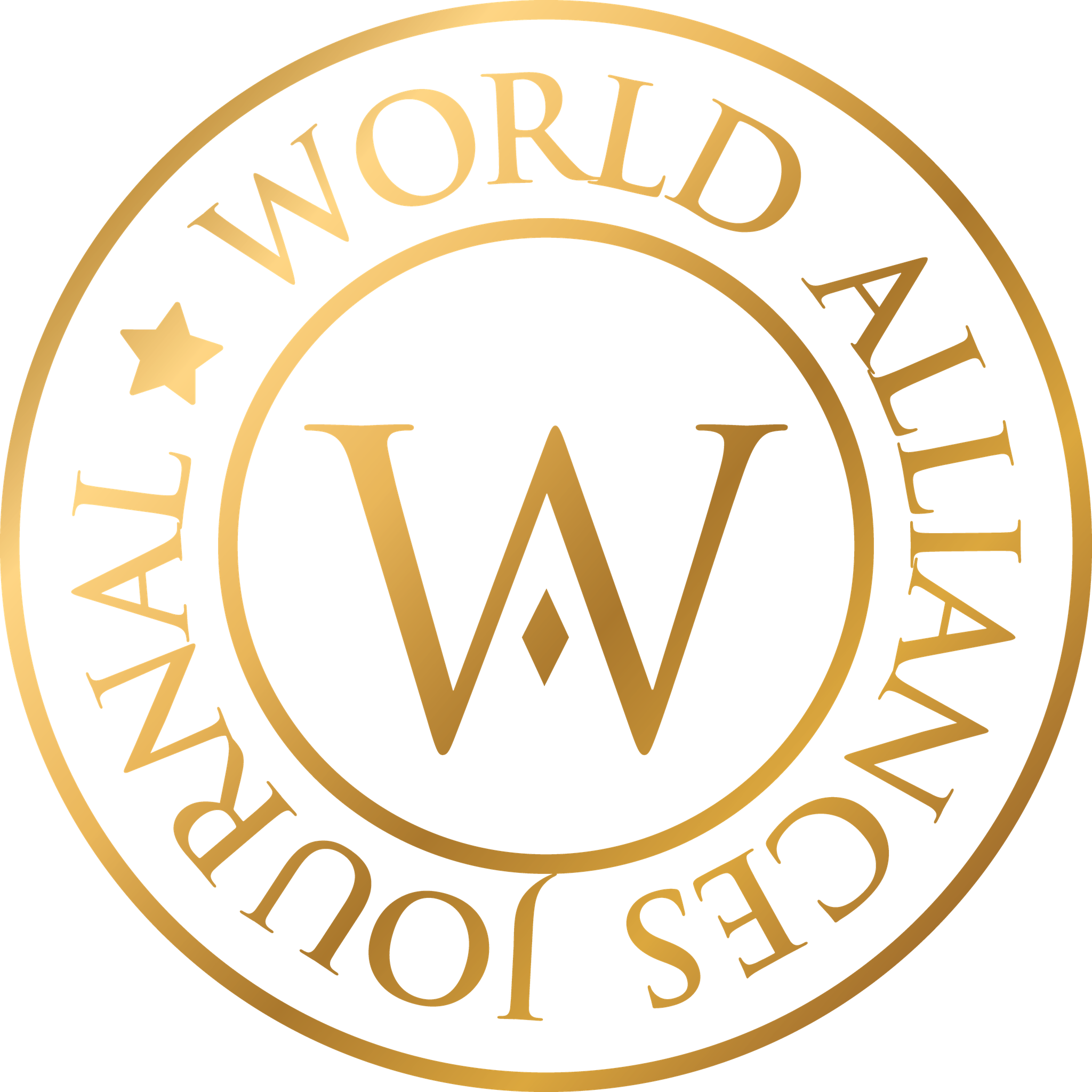
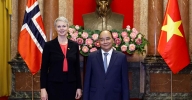
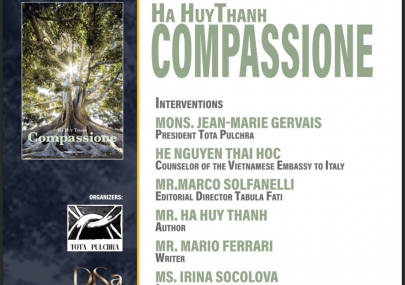
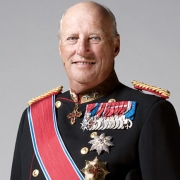
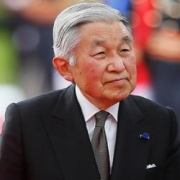
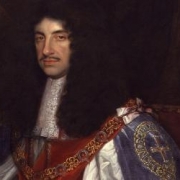
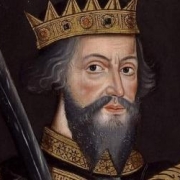








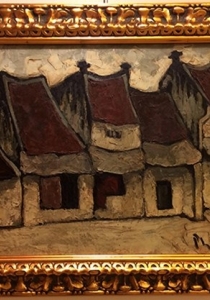

Comment